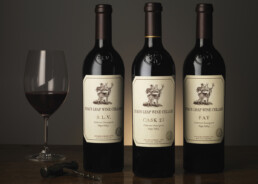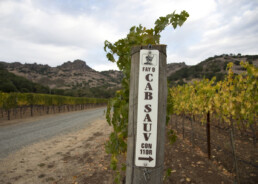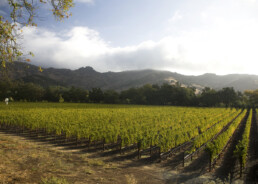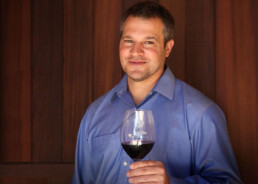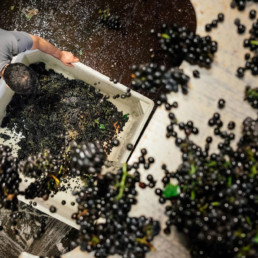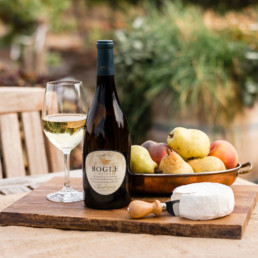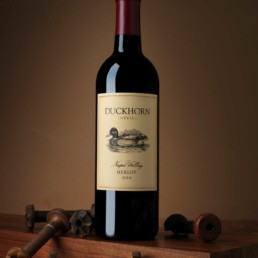Leaping Ahead: Stag’s Leap Wine Cellars, A Cult-Classic Wondermaker
Iconic, legendary, finest, complex, cult wine, timeless, powerful, poised, sumptuous, sensuous, magnificent, trophy-winning, top scoring, a benchmark wine...
In the world of wine, superlatives and high praise are too often bandied about with almost drunken abandon. However, when you get to taste Stag’s Leap Wine Cellars’ stellar wines, you too will be ecstatically shouting out all these descriptors and more. How better to experience this “first growth” of Napa Valley than by “armchair travelling” through the contents of your wine glass. This is the ORIGINAL Californian cult wine!
The Historic Showdown:
Over 4 decades have passed since a simple, blind wine-tasting, later to be known as the ‘Judgement of Paris’, when the then unknown Stag’s Leap Wine Cellars blasted out of the water the old world ideas of where a world-class Cabernet comes from…
…It was in May 24, 1976, that Stephen Spurrier, an English wine merchant and wine critic, in celebration of the American Bicentennial activities in Paris, organised a tasting pitting high quality First Growth French red Bordeaux and white Burgundies against California Cabernet Sauvignons and Chardonnays. The identities of the wines were concealed, and the labels revealed only after the jury of nine French tasters had voted its order of preference.
The winning red? A 1973 Stag’s Leap Wine Cellars ‘SLV’ Cabernet Sauvignon that topped four highly ranked Bordeaux, including Château Mouton-Rothschild and Château Haut-Brion. (A 1973 Chateau Montelena Chardonnay from California bested its French counterparts.) The result at the time was inconceivable. The tasting put Stag’s Leap Wine Cellars and the Napa Valley on the map. Even today its significance continues to be recognised within the Napa Valley, and naturally at Stag’s Leap Wine Cellars, which is celebrating its Golden Anniversary this year with a renewed commitment to producing complex, concentrated and age-worthy wines.
“The Judgment of Paris put Stag’s Leap Wine Cellars, the Napa Valley wine region, and the entire American wine industry on a path to worldwide renown,” said SLWC Winemaker Marcus Notaro. “It’s a legacy everyone at the winery, in the vineyard and in the tasting room carries forward each day, while pushing the boundaries to do even better.”
The Stag’s Leap Wine Cellars Story
The legend goes that the Stag’s Leap name was inspired by a large stag who successfully eluded hunters for years by leaping to freedom and disappearing into the Napa Valley wilderness and peaks.
But it was another legend of wine pioneering, Nathan Fay, who recognised the uniqueness and suitability of planting Cabernet Sauvignon along the Napa Valley’s Silverado Trail way back in 1951. Indeed, his were some of the first Cabernet Sauvignon plantings in the United States. Fay stubbornly ignored University of California Davis advice that the area was too cool for red Bordeaux varieties.
Meanwhile, a Chicago native, Warren Winiarski had become enamoured of fine wine whilst on a study sojourn in Italy. Returning to the U.S. his future professional path changed to follow this new passion. Whilst working as winemaker for Robert Mondavi, Winiarski tasted Nathan Fay’s 1968 homemade but rather exceptional cabernet. It was his “Eureka!” moment. The wine was nuanced, lifted yet powerful – he realised this Napa Valley terroir was special.
Seeing the potential of cabernet in this area Winiarski bought a 44-acre plot of orchard land right next to the vineyard owned by Nathan Fay. He paid the ‘princely sum’ of just under $200,000. He planted it out with Cabernet Sauvignon and this would become the iconic ‘SLV’ vineyard.
So began in 1970 the future legend – Stag’s Leap Wine Cellars (SLWC).
Time has validated these two visionary men’s belief in the Stags Leap District of Napa Valley. A sub region perfect for ripening luscious dark-berry fruit aromas and flavours in the grapes, firm yet supple tannins in the wines, a refreshing acid character from start to finish, and the structure that promised longevity in the cellar.
To complete the picture, in 1986 Winiarski purchased the Nathan Fay vineyard with the first bottle being released as Stag’s Leap ‘FAY’ Cabernet in 1990. Today, it remains one of the great Napa Valley vineyards, producing fruit with an abundance of supple red and blackberry characters, perfumed aromas and seductive, fine-grained tannins.
“It’s a good time to reflect on what Napa Valley was like when the winery was first established,” says winemaker Notaro. “There were more walnut and prune orchards than vineyards, very little infrastructure, and certainly no guarantee of success. The 1973 ‘SLV’ proved that a can-do spirit, keen attention to the viticulture and oenology practices and a remarkable site could produce California wine on par with the best of Europe.”
As a salute to this wine, 20 years after the Judgment of Paris, in 1996, the Smithsonian Institution created a display documenting the ground-breaking tasting and wine’s coming of age in California. The 1973 ‘SLV’ is now part of the permanent collection in the National Museum of American History.
The Wines & Vineyards
Stag’s Leap Wine Cellars (SLWC) is renowned for its estate-grown Cabernet Sauvignons – Cask 23, SLV, FAY and Artemis. These wines have become some of the most highly regarded and collected wines worldwide. They are fashioned to express classic elegance, structure, and ageability, and to reflect the place in which they are grown. The SLWC style may be a bit more restrained than classic Napa Valley because of the cooler sites and their philosophy to pick at optimal maturity before any over-ripeness shows.
It may be a cliché to call the red wines from Stag’s Leap Wine Cellars “an iron fist in a velvet glove”, but it is very apt as explained by Chief Winemaker Marcus Notaro:
“The iron fist describes the power, the tannin, the structure, the richness and the body when you taste our wines. The velvet glove – that describes more the finish the softness and the suppleness. The balance is getting wines with richness and flavour but which also have elegance and finesse on the finish.”
The winery is also recognized for its Napa Valley Estate Collection of wines including the ARTEMIS Cabernet Sauvignon and the KARIA Chardonnay. Further, they produce the lusciously approachable HANDS of TIME label which is inspired from the collection of clay imprints of the hands of the winery team which hang on the wine cellar wall: the winemakers, the viticulturists, the cellar hands and vineyard workers who play an integral role in the Stag’s Leap story.
As all good winemakers will attest, the best wines are achieved when you marry the winemaking style with what the vineyard gives you. Notaro is quite happy to heap praise almost entirely onto the shoulders of his vineyard manager Kirk Grace as he realises that the work in the vineyard is key… “I would be happy giving all the credit to Kirk – he gives me great grapes and it’s my job not to screw them up.”
The ‘SLV’ Vineyard (Stag’s Leap Vineyard) was the initial vineyard owned by the estate. It consists of 35 acres (14 ha) of Cabernet Sauvignon and 1 acre (0.40 ha) of Merlot. This vineyard was the source of the grapes that produced the wine that won the 1976 Judgment of Paris. The ‘SLV’ wines show dusty cocoa powder, dark fruits and intensity.
The ‘FAY’ Vineyard was purchased in 1986 from Nathan Fay. It is the oldest Cabernet Sauvignon vineyard in the area and consists of 66 acres (27 ha) of Cabernet Sauvignon and one-half acre (0.20 ha) of Petit Verdot. This site reveals itself with red fruits and as a perfumed, graceful, elegant wine.
Cask 23 – the ‘show pony’ – captures the complexity from both vineyards. It is a blend of the best plots in Fay and SLV, two very contrasting but neighbouring vineyards. The first vintage was in 1974, after the legendary wine consultant, Andre Tchelistcheff and Warren Winiarski tasted a barrel of SLV that they thought was such superior quality that it needed to be bottled on its own, which they did and named it after the barrel number that the wine was being aged in – Cask 23. Up until 1990 Cask 23 had only been a selection of the finest wines from SLV. But from 1990, some of the Fay vineyard was added to the Cask 23. It is a wine that is all about intensity and length of finish.
“This head-turner of a wine is saturatedly dark black-red, with irresistible scents of blue forest fruits, a pencilly freshness and a little bitter orange charm. Intense, fresh, bright and tightly gathered despite the intrinsic sweetness of the fruits. Perfumes float to the very end of the palate which finishes clean and fresh: a wine of “invisible” dimensions whose generosity is carried by its intrinsic grandeur.” – Andrew Jefford, Decanter (Dec 2018) on the 2013 Cask 23 Cabernet Sauvignon
In 1996 the Arcadia Vineyard of 128 acres (52 ha) near Mount George in Napa Valley was purchased. It was retained by the Winiarski family after the sale of SLWC in 2007. It still provides grapes for the estate on a contract basis.
In 2001, the winery purchased an additional estate vineyard, Danika Ranch, in the Oak Knoll region as a source of beautiful Chardonnay and Sauvignon Blanc.
Terroir
All great wines share a common thread, they are made in the vineyard – the terroir talks!
Napa Valley is by far America’s powerhouse appellation – its “first growth”. And the Valley within the Valley that gained AVA status in 1989 is Stags Leaps District (no apostrophe) which encompasses Stag’s Leaps Wine Cellars.
As Viticulturist Kirk Grace states, “The quality of any wine grown in any AVA comes down to geology and soil, orientation and aspect, and topography and climate.” He believes that the topography and climate are the dominant characteristics that make the Stags Leap District so unique.
The combination of volcanic and gravely soils produces fruit known for its electric intensity and lengthy, round flavours. A long growing season, with dramatic temperature swings – rapid heat early in the day that give way to cool San Pablo Bay breezes, make for a deft balance between sugar and acidity. These cool nights retain acidity and freshness in the wines. This explains why Stags Leap District wines show both power and elegance, ripeness and freshness, dark fruit and minerality.
Although the ‘SLV’ and ‘FAY’ vineyards adjoin each other, the iconic Napa wines they produce carry expressly different aspects of the terroir. Understandably, both the vineyards are geologically very different:
SLV soils are predominantly volcanic soil deposits from erosion off the surrounding Vaca Mountains. This contributes to a multi-layered structure, concentration, and spicy intensity.
FAY’s soils are more alluvial in makeup. Mainly loam and clay sediments from the Napa River. In the wine this seems to yield more elements of softness, perfume, and rich berry qualities.
This marked soil difference is reflected in the finished wines’ personalities. The FAY always has a perfumed character to it: cinnamon, more red fruit, bright berry pie, softer, more silky tannins. Whereas with the SLV classic personality has dusty cocoa powder, blackcurrants, more black fruit and richer tannin structure.
The Winemaking Philosophy & Methodology
The Stag’s Leap Wine Cellars philosophy is deeply ingrained as part of their sustainable farming methodology – managing crop covers, pest control, drip irrigation, habitat restoration, water conservation and more. They pick in small lots and maintain the identity of those lots through destemming/crushing, fermentations and ageing. Those small lots provide the winemaking team with a rich palette from which to construct each blend. All the wines are aged in French oak from a variety of coopers and forests to achieve the best harmony and balance.
Chief winemaker, Marcus Notaro, admits that he eschews science when deciding to pick and goes entirely on taste. “I’m not a super technical winemaker – I go by taste… year after year the key difference is the taste profile. I pick when it tastes right.”
The winemaker uses a few vinification techniques to tease out the differences between SLV and FAY. He varies his ferments, liking to use délestage (rack and return), tank by tank, then he leaves FAY on the skins slightly longer because the tannins are softer than SLV.
“Complexity is important, I want to be able to show off the Cabernet Sauvignon. I love the currant aroma and flavour of Cabernet. I like the blue, red and dark fruits. In terms of mouthfeel and finish I know ‘balance’ is an overused word, but that is important. I want it to have some richness without being over the top-type style.” – Marcus Notaro, Winemaker
Then onto marrying the flavour of the wine with the use of different barrels. With FAY he tends to use more lightly toasted barrels that highlight the perfume character and match well with the juicy fruit and the silkiness of FAY. SLV, being a bigger wine, has a weighty structure with darker fruit so they tend to use more powerful barrels.
For the blend of their signature Cask 23 it will change vintage to vintage – there are certain ’Cask’ blocks within both vineyards that have that ‘special look’ to them so are earmarked for Cask 23. Notaro says that, in theory, in a ‘power year’ (warm vintage) there will be more FAY in the blend than SLV and vice versa in a cooler vintage. But he’s not revealing too many secrets.
For the Karia Chardonnay 90% is barrel fermented with the 10% in stainless tanks to mix back some freshness and fruit into the blend, then staying on the lees for about 7 months. About a third uses new French oak with the remainder vinified separately in older French oak. Since he joined Stag’s Leap Notaro has been experimenting a little by adjusting the Chardonnay to add a bit of lush fruit and roundness – this has been well-received by drinkers and critics alike.
While there is no denying that the SLWC wine styles overall have become richer over recent years, this seasoned winemaking team has retained more of a terroir focus compared to many other top end producers in the region.
The Man Behind the Wine – Marcus Notaro
It has been said, jokingly, that Notaro is the wine nerd’s best nerdiest friend – immensely knowledgeable, possessing a clear philosophy, and keen to talk at length about the tiniest detail of his wines, vineyards and the thinking that goes behind what are some of the world’s best examples of Cabernet Sauvignon. Luckily for all who drink his SLWC wines, we are happy to embrace his wine “nerdiness”.
Prior to joining the Napa winery as head winemaker in 2013, Notaro was making Cabernet Sauvignon for nine years at Col Solare in the Red Mountain appellation of Washington State where his style of winemaking was very much akin to that of Stag’s Leap – uniting Old World traditions with New World innovations.
It is Notaro’s skills and that of his winemaking and viticultural teams that keeps SLWC at the pinnacle of the world’s top Cabernet producers. Not to mention their resilience to affront earthquakes (2014), fires (2017 & 2020) and COVID-19 to protect this seriously prime bit of “first growth” real estate in Napa Valley.
In 2007 the SLWC legacy was handed over from trailblazing Winiarski to a partnership of Washington State Ste. Michelle Wine Estates and Tuscany’s winemaking dynasty – Marchesi Piero Antinori.
“Very few brands have longevity and staying power,” said Jim Mortensen, President and CEO of Ste. Michelle Wine Estates “The ones that stick around stay true to themselves and continually push the envelope. Stag’s Leap Wine Cellars follows this model. No resting on laurels or autopilot, but rather a drive to ensure the next 50 years are even more glorious than the first 50.”
Today, the wines of Stag’s Leap Wine Cellars continue to command the respect and admiration of wine aficionados around the world, proving beyond a doubt that the Judgement of Paris victory was no accident, and that the Stag’s Leap Wine Cellars wines age as gracefully as the time-honoured wines of Bordeaux.
Acclaim
2016 Stag’s Leap Wine Cellars CASK 23 Cabernet Sauvignon:
“Medium to full-bodied, the palate has a very firm frame of super ripe tannins supporting the multi layered flavours, finishing on an epically long, lingering fragrant earth note. Beautiful.” – 96 – 98/100 points. The Wine Advocate (October 2018)
2013 Stag’s Leap Wine Cellars CASK 23 Cabernet Sauvignon:
“Deftly balanced, creamy and smooth-textured, with an elegant array of red and dark berry, anise, cedar and mocha flavours, ending with fine-grained tannins and a splash of mocha. Drink now through 2032.” 93/100 points. Wine Spectator
2016 Stag’s Leap Wine Cellars ‘SLV’ Cabernet Sauvignon:
“Medium to full-bodied, the palate reveals incredibly provocative and complex layers of black fruits and earthy notions, supported by a rock-solid, grainy texture and plenty of freshness, finishing with great length and depth.” 94 – 97/100 points. The Wine Advocate (October 2018)
2016 Stag’s Leap Wine Cellars ‘FAY’ Cabernet Sauvignon:
“Giving way to earth-laced blackcurrants, black cherries and warm plums plus suggestions of unsmoked cigars, charcuterie and tar. Medium to full-bodied, the palate is completely coated with energetic black fruits and savoury layers, framed by firm, ripe tannins and background freshness, finishing long and mineral laced.” 93 – 96/100 points. The Wine Advocate (October 2018)
2017 Stag’s Leap Wine Cellars ‘KARIA’ Chardonnay:
“Features grapefruit, lime cordial and orange blossoms with marzipan and beeswax hints on the nose. The palate is medium bodied with lovely vivacity and a refreshing line, finishing zesty.” 90/100 points. The Wine Advocate (January 2019)
2017 Stag’s Leap Wine Cellars ‘Hands of Time’ Napa Red:
“A more affordable pick here from the world-renowned Napa Valley winery. This has a delicious chocolate-cherry nose followed on the palate by a rich and sumptuous texture giving cool, menthol-laced blue and black fruit flavours – blueberries, plums and blackcurrants alongside floral touches of violets. It’s deep, dark and brooding but not at all heavy. Long length and mouthcoating tannins.” 92/100 points. Decanter (July 2020)
